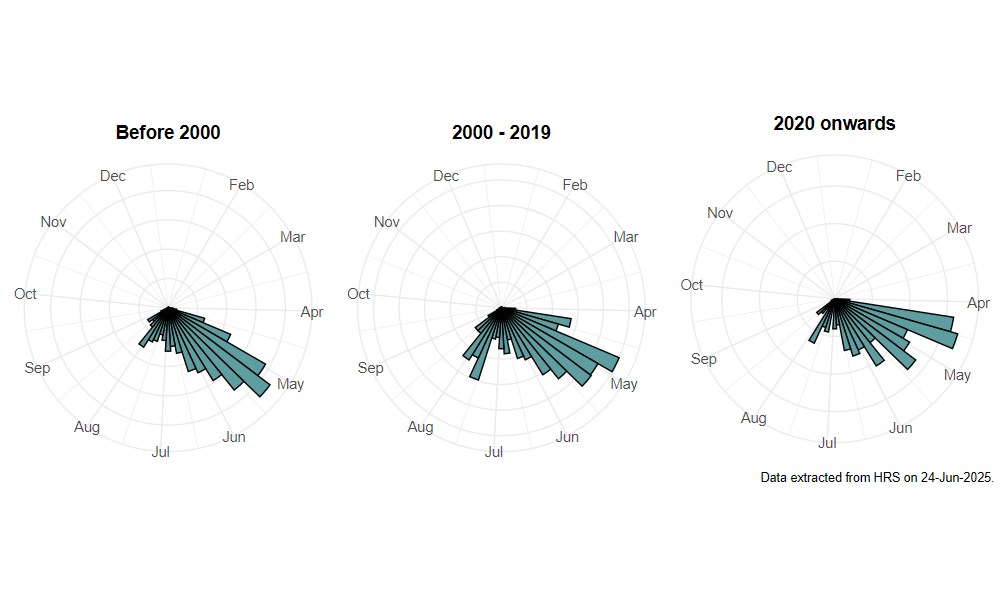Pipiza noctiluca (Linnaeus, 1758)
Identification
Identification difficulty = 3. ![]()
![]() according to Ball & Morris, 20241
according to Ball & Morris, 20241
Biology
The larva is aphidophagous, and has been reared on a variety of ground layer and arboreal species, including Cavariella on white umbels. Adults are usually found resting on vegetation along woodland margins, hedgerows and similar situations, or visiting flowers.
Flight period
The following plots show the number of unique records per week excluding those reported to be of immature stages.

Distribution
P. fasciata, P. lugubris, P. noctiluca and P. notata, are justifiably seen as a difficult species complex by many recorders, and are often ignored. Consequently, they must be regarded as under-recorded and probably subject to frequent misidentification. This is much the most frequently recorded member of this group, however, and records are widespread in the southern half of Britain, with scattered records to northern Scotland.

Trends
The following plots show the Frescalo TFactor vs year and a map of the rescaled frequency (all records) for the species.
-
Ball, S., & Morris, R. (2024). Hoverflies of Britain and Ireland. WILDGuides (3rd ed.). Oxford: Princeton University Press. ↩